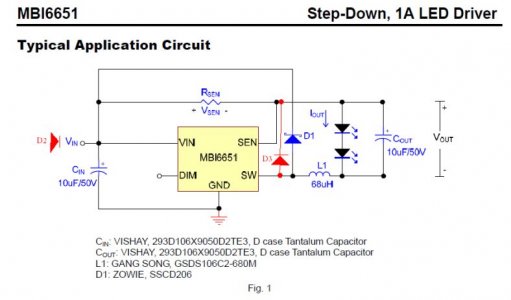Another suggestion... test the current running from your LED to the Vout- of the one that is showing a dropped voltage, maybe all of the current is going out through one driver? Since they are wired in parallel, this little electrons might not know where to go
LDD#2 might be 27.3V out+ and 27.3V out- but the difference between out+#2 and out-#1 is still in the ballpark of physics to get you 1300mA from two drivers.
That's the problem- All of the current is returning through the Vout- connection at LDD#1 and not LDD#2. I connected my amp meter between Vcc and + terminal of the power supply and measured 1.35 amps. I then removed the Vout- connection from LDD#2 expecting the current to drop. It did not, and remained at 1.35 amps. The only connection available for the current to travel back to the LDD's was through the Vout- @ LDD#1. This leads me to believe that the second LDD influences the current limiting of the first, causing it to carry double of the load.
I'm going to re-run the experiment again with all 4 isolation diodes in place and test to see if the current is actually shared between the two LDD's or not. It appeared to be shared on the first go around of testing but I want to make sure for Tomservo's sake.
Last edited:


